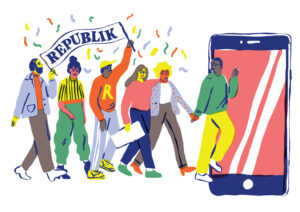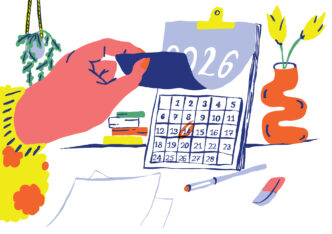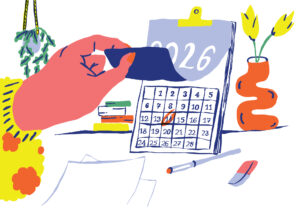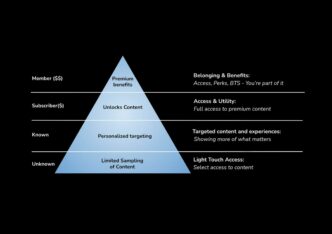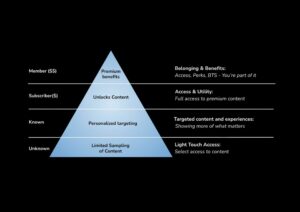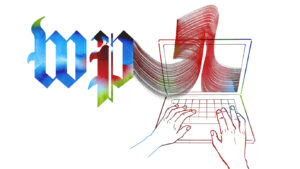
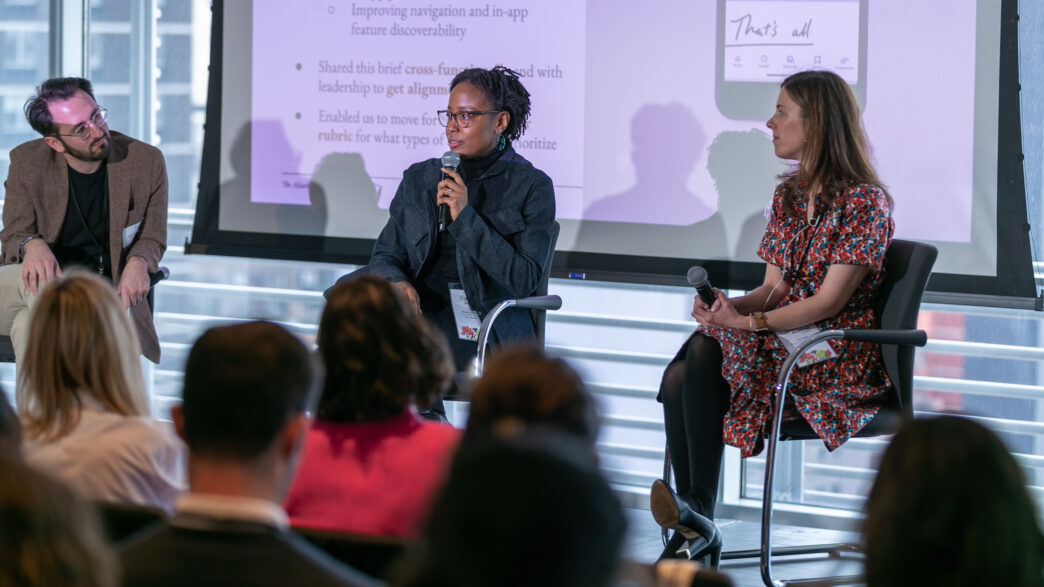
“Our products are better when informed by the people who use them“
The Audiencers' Festival at The New York Times Building on March 15th brought together 150 digital publishing professionals to discuss everything from audience research to newsletters, engaging young audiences and maximizing on the value of registration.
To kick the day off, Gina Bulla, Executive Director Audience Research, and Mariah Craddick, Executive Director Product, shared how The Atlantic is using audience research to bring more value to readers and subscribers, with the example of their mobile app development.
What is audience research at The Atlantic?
A relatively new discipline at The Atlantic, audience research was launched in 2019 right before their digital subscription product. Audience research is part of 3 insights teams – advertising, data science and audience research. The role of the latter is to connect directly with subscribers, to bring their voice into the room when making decisions about product. For The Atlantic, it’s an incredibly important discipline as they believe products are better when informed by the people who use them.
> To add to your reading list: Audience research at The Atlantic, the questions that data can’t answer
Gina sees her work in audience research as falling into 4 buckets:
- Listen – keeping an eye on social media comments, care team feedback, reviews… you can learn a lot without ever asking a question
- Connect – directly connecting with audience via zoom to get feedback
- Educate – sharing learnings with the entire organization
- Advocate with balance – advocating for the audience whilst also bearing in mind that a lot of things go into a business decision
Audience research guiding principals:
- Seek out multiple perspectives – talk to people with different backgrounds and with different relationships with The Atlantic. For instance, not only super fans but also casual readers or those who don’t yet know or like The Atlantic
- Respect readers – being thoughtful about reaching out to readers, ensuring they understand why they’re being asked questions
- Interpret without bias – much of this research is qualitative, so ensuring they go in without preconceived bias, etc.
- Tell the truth – don’t only share positivity, but honest feedback. Don’t shy away from sharing the less nice stuff!
Audience research x product case study: Bringing more value to readers and subscribers through the mobile app
Mariah shared their product development lifecycle, with its 4 primary phases, and how they bring audience research into this. The goal is to not only use research at the discovery stage but throughout the building and post building steps to evaluate, test and optimize the product.
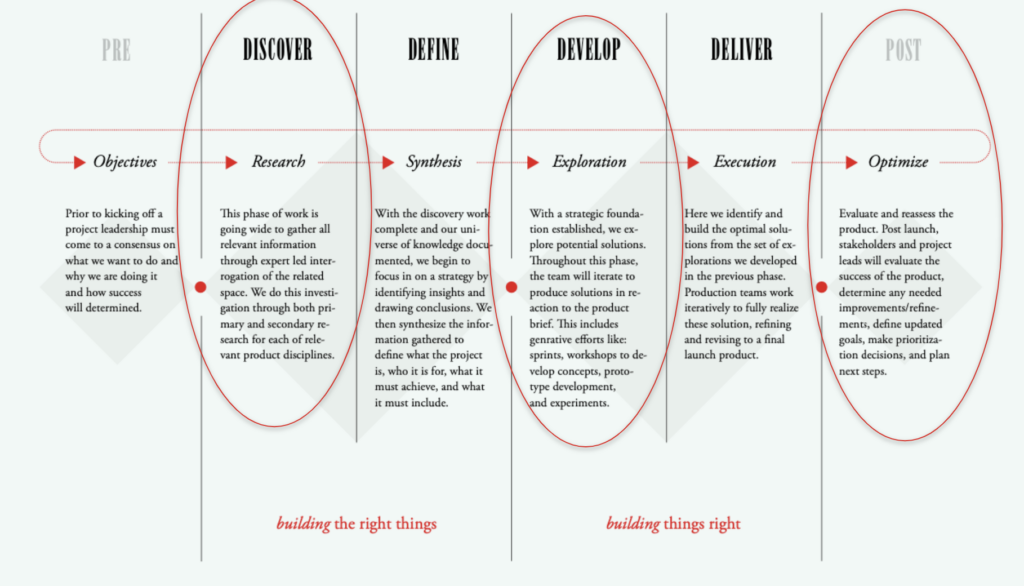
Looking at the example of optimizing their mobile app, internal data suggested that their app could play a bigger role in engaging and retaining subscribers.
- Engagement: subscribers who use the app have a more engaged “reader state” than those who don’t, meaning they were coming back and using the product more frequently than others
- Loyalty: they are also more likely to renew than subscribers who do not use the app
- Adoption: app adoption was lower than other products
However:
- Increasingly saturated: mobile apps struggle with discoverability and differentiation challenges
- Declining engagement: usage is down for the majority of newspaper and magazine apps in the past two years
So, they had a few key research questions to consider:
- Who is our mobile app is for? Thinking beyond demographics, such as what relationship app users might have with The Atlantic
- What are usage habits for magazine and newspaper apps in general and The Atlantic specifically?
- How might we evolve our app to better serve readers and subscribers?
Step 1: listen
Firstly, surfacing knowledge from existing resources and sources…
Annual reader survey: 60K+ respondents findings, including open ended questions and working with the data science team to do some Natural Language Processing
Customer care team: 25K+ inquiries per month and a monthly report for the audience research team
App comments: 2K+ ratings and slack channel
Step 2: connect
Second, speaking directly with news/magazine app users…
Diary study: 12 participants are asked to track usage for 2 days, sharing why and when they used the app. This was executed via the tool dscout, useful to connect you to people who might not necessarily already be in your own email list
Survey existing app users: 500+ respondents, invited via app
Interviews: 6 subscribers, recruited via surveys
Step 3: educate
Shared our findings, firstly with product teams but also with teams across the company.
Step 4: advocate with balance
Recommendations that serve both the audience and business:
- There’s an opportunity for a broader Atlantic app audience
- Convenience and curation are the app’s most attractive attributes
- Some respondents wish The Atlantic app had more synergy with other platforms
- The Atlantic app can help make their journalism more manageable
How we used audience research to guide mobile app feature development
Strategic positioning: bolstered confidence in positioning the app as an engagement-driving tool in the wider portfolio
Identifying requirements: helped the team identify table stakes needs, what opportunities they’d missed, and what users already loved
Audience definition: clarified who the target audience should be to guide feature ideation
Packaging this up into something to use
- Distilled findings into a strategy brief recommendation focused on 3 primary opportunities in the app:
- Helping users manage how and when they can read
- Providing the ability to set and manage in-app preferences
- Improving navigation and in-app feature discoverability
- Shared this brief cross-functionally and with leadership to get alignment
- Enabled us to move forward with a clear rubric and guide for what types of features to prioritize


